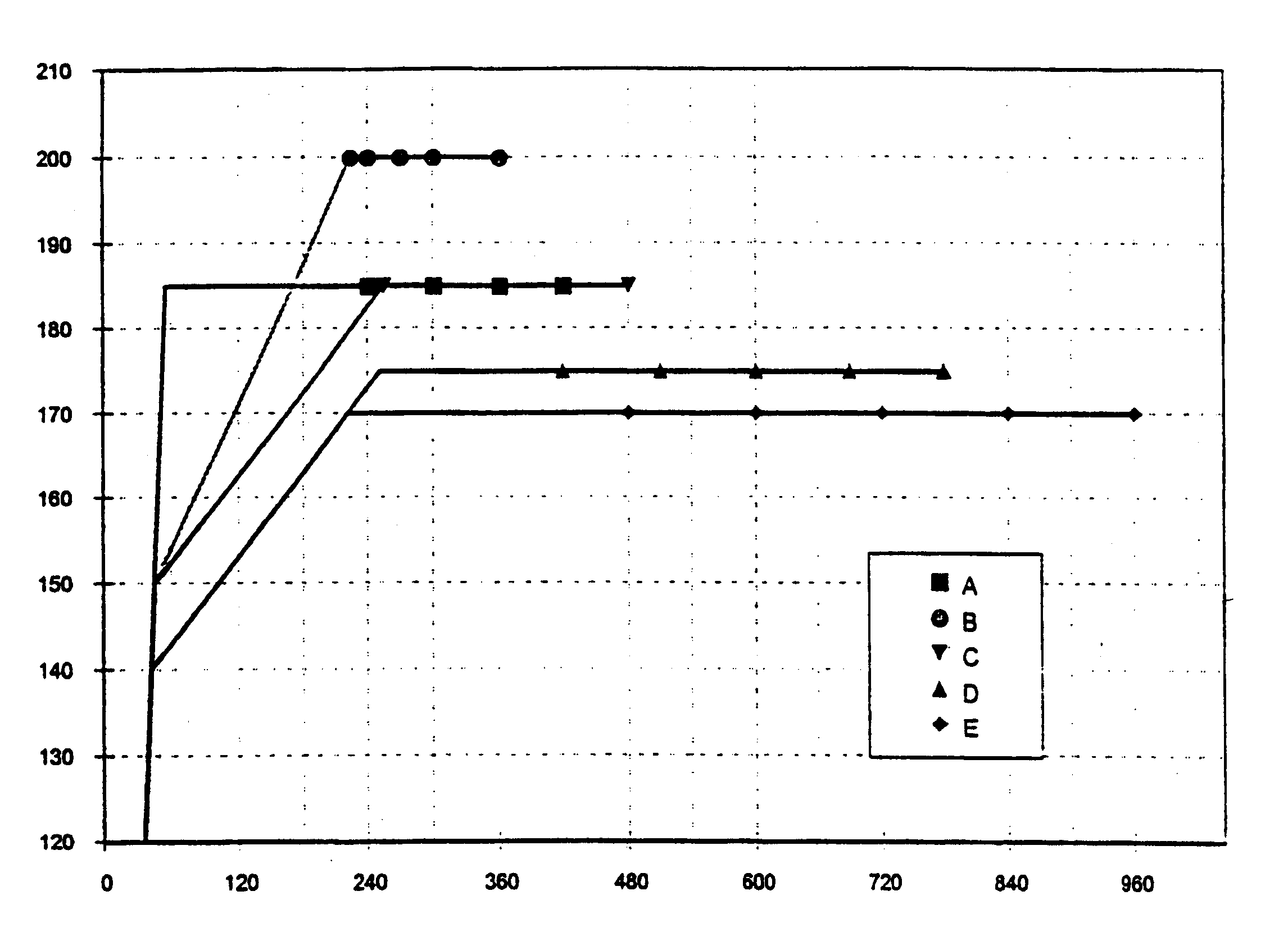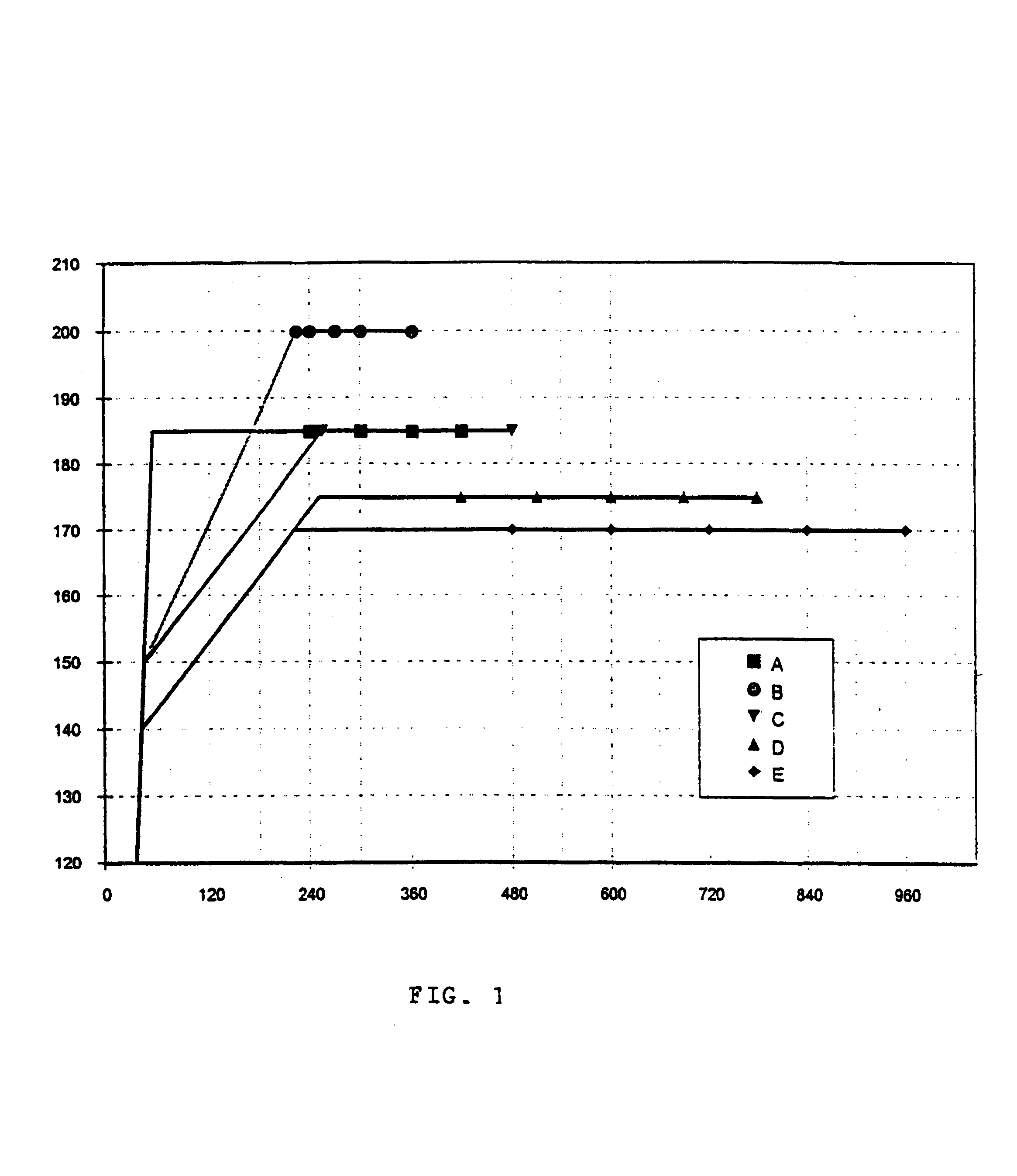Process of aging an aluminum alloy containing magnesium and silicon
a technology of aluminum alloy and magnesium silicate, which is applied in the field of heat treatment of al- mg- si aluminium alloy, can solve the problems of excessive throughput in the ageing oven, substantial chance of reversion, and beyond the practical limits of the total ageing time, so as to reduce the risk of reversion, and reduce the effect of total ageing tim
- Summary
- Abstract
- Description
- Claims
- Application Information
AI Technical Summary
Benefits of technology
Problems solved by technology
Method used
Image
Examples
Embodiment Construction
Three different alloys with the composition given in Table 1 were cast as .o slashed.95 mm billets with standard casting conditions for AA6060 alloys. The billets were homogenised with a heating rate of approximately 250.degree. C. / hour, the holding period was 2 hours and 15 minutes at 575.degree. C., and the cooling rate after homogenisation was approximately 350.degree. C. / hour. The logs were finally cut into 200 mm long billets.
The extrusion trial was performed in an 800 ton press equipped with a .o slashed.100 mm container, and an induction furnace to heat the billets before extrusion.
In order to get good measurements of the mechanical properties of the profiles, a trial was run with a die which gave a 2*25 mm.sup.2 bar. The billets were preheated to approximately 500.degree. C. before extrusion. After extrusion the profiles were cooled in still air giving a cooling time of approximately 2 min down to temperatures below 250.degree. C. After extrusion the profiles were stretched ...
PUM
| Property | Measurement | Unit |
|---|---|---|
| hold temperature | aaaaa | aaaaa |
| hold temperature | aaaaa | aaaaa |
| hold temperature | aaaaa | aaaaa |
Abstract
Description
Claims
Application Information
 Login to View More
Login to View More - R&D
- Intellectual Property
- Life Sciences
- Materials
- Tech Scout
- Unparalleled Data Quality
- Higher Quality Content
- 60% Fewer Hallucinations
Browse by: Latest US Patents, China's latest patents, Technical Efficacy Thesaurus, Application Domain, Technology Topic, Popular Technical Reports.
© 2025 PatSnap. All rights reserved.Legal|Privacy policy|Modern Slavery Act Transparency Statement|Sitemap|About US| Contact US: help@patsnap.com


